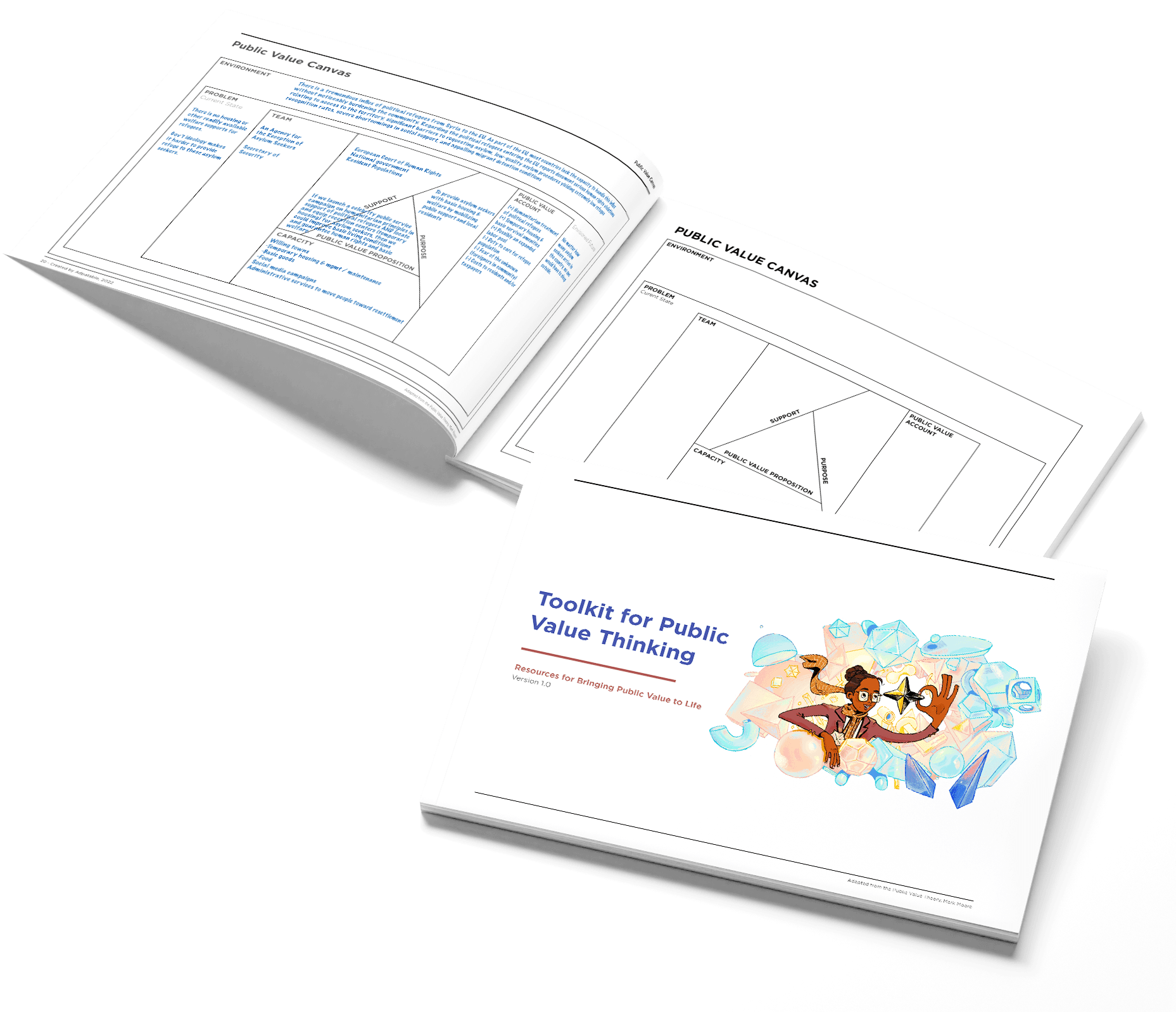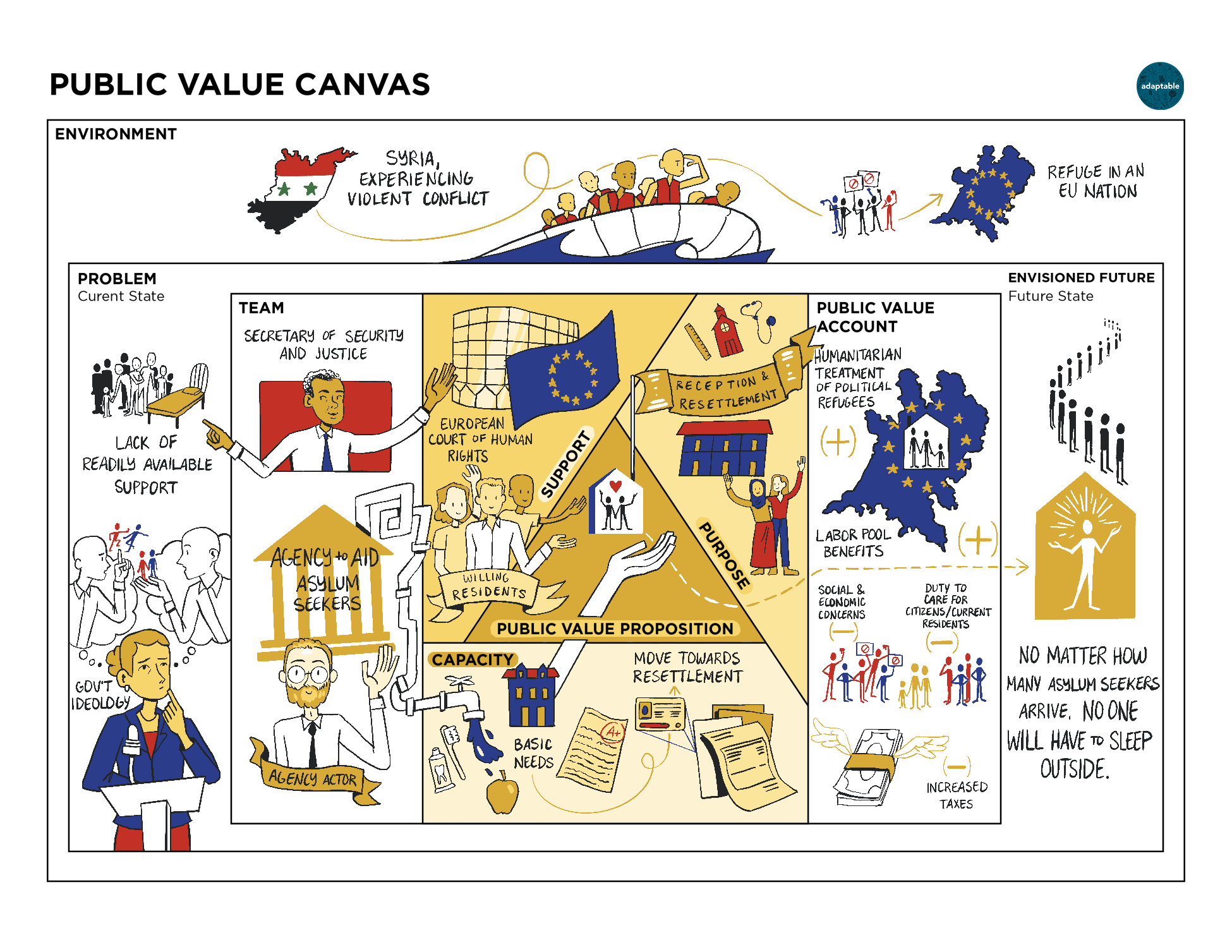What is the Public Value Canvas?
The Public Value Canvas is the big picture: a way to organize and visualize how Public Value Thinking applies to the problems you want to address. By mapping your initiative to create public value in one image, this tool lends itself to open dialogue and discussion of how to move forward.
How do I use the Canvas?
The Canvas brings together your insights into the problem, your plan to improve things, and the benefits and costs of that plan. It also makes sure you are aligned across the three core concerns of purpose, support, and capacity. You can diagram the relationships between these aspects of your initiative on your own, or you can use the supporting worksheets for each section of the Canvas to assist you in filling it out.

Hosting Mass Migration
A PUBLIC VALUE CASE STUDY
The following case walks you through how the Public Value Canvas can succinctly summarize your initiative, and how the supporting worksheets can be used to assist your team in completing the Canvas.
HOSTING MASS MIGRATION
Let's consider a situation where the Public Value Canvas is used to analyze and address a complex challenge. In this context, the actor and their team are working on behalf of an agency providing refuge to Syrian asylum seekers in a particular country in the European Union. The team is up against a lack of readily-available resources for the influx of refugees, as well as dealing with government naysayers who have competing views on the costs and benefits of Syrian relocation to their country.
Working with both the national agency for immigration and resettlement and the Secretary of Security & Justice, the team needs to garner both monetary and public support for their proposal to receive Syrian asylum seekers. They want to provide these political refugees with basic needs: housing, healthcare, and education. They also want to help transplants move towards resettlement over the long term. The humanitarian treatment of refugees is a duty the team feels called to fulfill, but members of the opposing political party cite recent social disruption and the duty to care for the country's current citizens as important reasons not to move forward.
Earning the support of a network of willing residents, members of both political parties, and the European Court of Human Rights will be a necessary step towards mobilizing the work. Faced with all of these factors, the team must logically approach next steps to ensuring that their envisioned future comes to life, and to assure that no matter how many asylum seekers arrive in the country - no one will have to sleep outside!

A collaboration between George Veth and Mark Moore, the originator of Public Value Theory.

